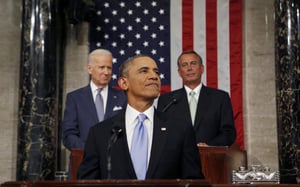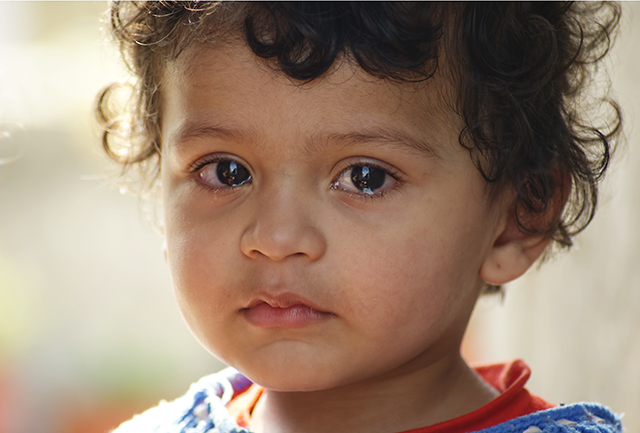 This week in Washington, President Obama shared his vision for strengthening early learning throughout America. In the President’s State of the Union address and also in a visit to a preschool program in Decatur, Georgia, the President talked about the importance of early learning settings and the reality that there is a direct relationship between early learning settings and school readiness, school performance, and increasing high school graduation rates. Ultimately, this leads to stronger families, better paying jobs, and stronger communities.
This week in Washington, President Obama shared his vision for strengthening early learning throughout America. In the President’s State of the Union address and also in a visit to a preschool program in Decatur, Georgia, the President talked about the importance of early learning settings and the reality that there is a direct relationship between early learning settings and school readiness, school performance, and increasing high school graduation rates. Ultimately, this leads to stronger families, better paying jobs, and stronger communities.
Early Learning is an Economic Development Strategy.
We can talk about the need to strengthen the economy and the need for a long-term economic development strategy all we want. The current unemployment rate is 7.9 percent. Unemployment has exceeded 5 percent since 2008 – 5 years of unemployment ranging from 7.8 percent in 2009 to a high of nearly 10 percent in 2010 back to around 8 percent today. The fact is, while the economy is modestly improving, it’s still not as strong as we need it to be for the long-term growth of this nation.
What can we do to help promote economic growth and prosperity?
The strength of the workforce is directly related to the strength of the economy and the resilience of communities. We can start with a better economic development strategy from birth. We can make sure that our future workforce has the foundation they need for success in school and beyond. Where does that start? Not in the elementary school years. As every parent knows, early learning starts at birth. It’s time as a nation that we embrace that vision and understand the direct connection between a child’s earliest years, their school success, and the long-term strength of our economy.
The President’s early learning plan announced this week is an economic development strategy for every state. The President’s plan is outlined in a White House fact sheet posted this week.
High Quality Preschool for Every Child:
- Cost Sharing for preschool in all 50 states
- For 4-year-old children at 200 percent of poverty or below
- Sliding fee scale for families with higher income at state option
- Quality benchmarks to ensure accountable investments
- State level standards for early learning
- Qualified teachers in every classroom paid on par with public school teachers
- Comprehensive data and assessment systems
- Rigorous curriculum with health and related services
- Small class sizes and low adult child ratios
- Effective evaluation and review
Fewer than 3 in 10 four-year-olds are enrolled in high quality preschool programs. For poor children who need it the most, the lack of access to a great preschool education can affect their whole lives.
Only 6 out of 10 kindergarten students have access to full day programs. States can use funding to extend part-day kindergarten to full-day once their goals to reach children below 200 percent of poverty are met.
Quality Early Learning Settings for Our Youngest Children:
- New Early Head Start – Child Care Partnerships
- Funds allocated based on competitive grants
- Expands the supply of quality child care to children from birth through age three
The fact is that too many children today do not have access to quality child care. State laws vary greatly, not just with regard to state preschool initiatives but also with regard to state child care programs and the training and education of the early childhood workforce. The President’s plan will challenge states and communities to do their best for children so that children can do their best when they enter school.
Extending and Expanding Evidence-Based, Voluntary Home Visiting
- Expanding home visiting models that work
- Nurses, social workers, and other professionals to work with at-risk families in their homes
- Connecting families to assistance that affects a child’s health, development and ability to learn.
Home visiting programs have been successful in improving the lives of families with young children leaving long-lasting effects on the social, emotional, physical, and cognitive development of children.
The Roadmap from Here:
We don’t know a lot of details, but we know the framework. And, it’s exciting! The path to achieve the President’s agenda will need to be worked out between Congress and the Administration. Exactly how much detail will be in legislation and how much will be subject to state innovation through applications to the Department of Health and Human Services and the Department of Education we don’t know at this point.
It is time for everyone to start thinking about how we can achieve this early learning vision. We invite you to think about this over the next several weeks and send us your thoughts, comment on this blog. It’s important for us all to be engaged as policy is shaped. What works in your community to promote quality child care for young children? What ideas do you have? What do you think are key points to be addressed? We have a historic opportunity. Let’s not let partisan politics get in the way. Affordable, quality child care, quality preschool, and ultimately children’s school success should not be partisan issues. Join us by telling Congress today that it’s time for a comprehensive birth through kindergarten strategy for our children! Our nation’s economic development depends on it.
To take action, click here to visit our action center!






